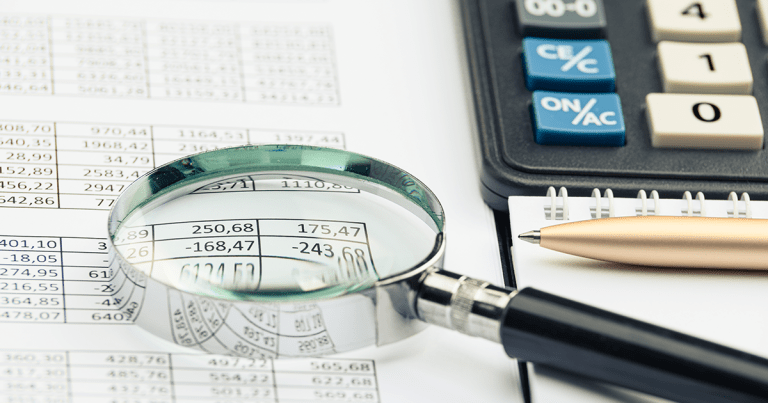Financial statements are a must-have for any organization. The balance sheet reveals how much its assets and liabilities are worth based on historic costs. The income statement tells investors and lenders how profitably and efficiently the company has performed during the accounting period. The statement of cash flows details sources and uses of cash from operating, investing and financing activities. All this is relevant information for company insiders, as well as for lenders, bonding companies and other stakeholders.
Whether you prepare these statements in-house or hire an outside accounting firm to prepare them is a cost-benefit decision. But accounting for construction companies is often less straightforward than it is for retailers, manufacturers and service firms. Construction bookkeeping requires a specialized understanding of accounting for multiple long-term projects, as well as a mastery of their specific reporting requirements for income tax, payroll, union and bonding purposes.
If you opt to prepare your financial statements in-house, an accounting professional can help set up your books to comply with generally accepted accounting principles (GAAP) and the Internal Revenue Code. A CPA can also review or audit your in-house statements to provide investors, lenders and other third parties with a greater level of assurance.

Here are some basic guidelines bookkeepers should bear in mind when preparing financial statements for construction firms:
Provide Comprehensive Cost of Sales Figures
Cost of sales is an accounting term that has a very specific meaning. It refers to any costs incurred by your firm that are directly or indirectly used to bring a construction project to a saleable condition and substantial completion, per the project documents, and used to deliver the finished project to the customer. In accordance with GAAP, cost of sales should be subtracted from sales on your income statement to arrive at gross profit.
In turn, a comprehensive, professional presentation of your gross profit can qualify your firm for larger loans, lower interest rates and greater bonding capacity. If costs aren’t correctly classified between cost of sales and operating expenses, however, stakeholders could be making apples-to-oranges comparisons between your company and industry benchmarks (or your competitors’ financial statements).
If you have only three line items under cost of sales — direct labor, direct materials and subcontractor costs — it could signal a problem. Also includable in cost of sales are allocations of overhead costs, such as site telecommunications, benefits and pension costs for field workers, and vehicle costs.
If your total cost of sales figures contain errors or omissions, it’s also likely that your in-house accounting personnel aren’t providing you with accurate job costing reports on individual projects. Without accurate job costing details for each project, you have no idea whether your bidding process works or which jobs are actually profitable.
Set Up a Meaningful Chart of Accounts
Your chart of accounts was probably set up when you first began operations. But it may require some tweaking to align your bookkeeping practices with a GAAP or tax-basis financial statement presentation. Proper set-up requires significant forethought and experience. Such diligence can enhance the readability of your firm’s financial statements both for you and third parties who rely on them. It can also facilitate preparation of your year-end financial statements and tax returns.
Numbering of asset, liability, equity, income and expense accounts on your chart of accounts should generally follow the format of your financial statements. The 1000 series is generally reserved for assets. For example, your checking account might be assigned account number 1120, trade receivables might be 1200, costs in excess of billings might be 1320 and tools might be 1550.
Other account numbers are generally assigned as follows:
- 2000 series is for liabilities;
- 3000 series is for equity accounts;
- 4000 series is for sales (or revenue) accounts;
- 5000 series is for cost of sales;
- 6000 series is for operating expenses;
- 7000 series is reserved for interest and income taxes; and
- 8000 and 9000 series are for other income and expenses.
Customarily, accountants organize their 6000 series (operating expenses) in alphabetical order to make line items easier to locate on the financial statements. To keep reports alphabetized in the future, it’s helpful to skip numbers between accounts in case new line items need to be inserted later on.
Name Accounts Succinctly
Some forethought also should be given to how you name accounts. For example, the name “transportation” might be mistaken as an asset; instead, the term “vehicle costs” might be more descriptive when reporting expenses related to your vehicle fleet.
Likewise, “sales tax expense” denotes a cost to the end user, not the construction firm. A more appropriate account name might be “sales tax payable” to convey the nature of the obligation.
Also ensure account names are not overly ambiguous. For example, instead of the term “discounts,” considering using “sales discounts” for discounts given to customers and “purchase discounts” for discounts taken on supplier invoices.
Seek guidance from your accountant and tax advisor who specializes in the construction niche when setting up or revising your chart of accounts. Their guidance can help you prepare more meaningful, user-friendly and professional-looking financial reports.


